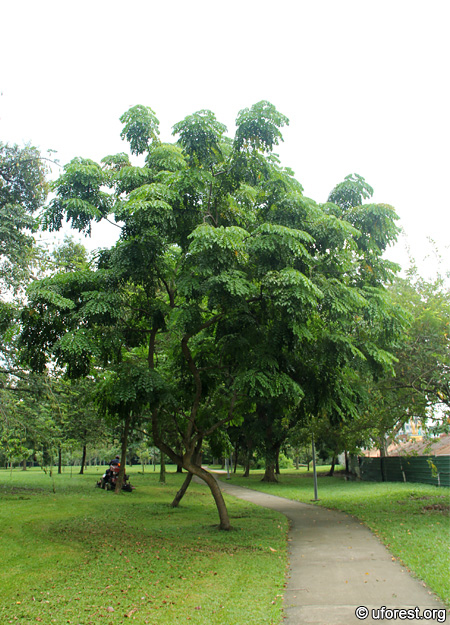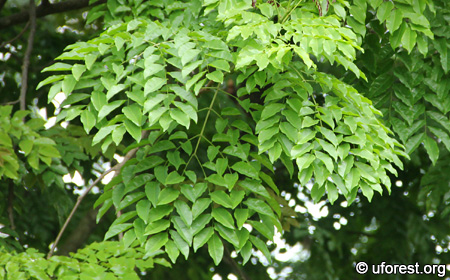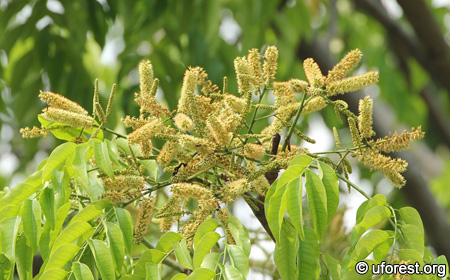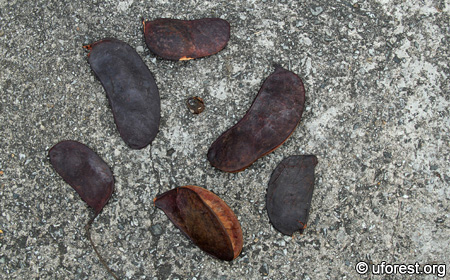| Etymology | Genus | Red bark, referring to the bark which can turn water reddish |
|---|---|---|
| Species | Fragrant | |
| Family | Fabaceae | |
| Synonyms | Fillaea suaveolens Guill. & Perr., Erythrophleum guineense G.Don | |
| Common Names | Ordeal Tree, Sasswood, Sassy Bark, Red-water Tree | |
| Status | Exotic: Cultivated Only | |
| Form | Tree | |
| Native Distribution | Tropical Africa | |
Diagnostics:
This tree has a distinct foliage. The bipinnate leaves are mildly droopy, and the leaflets are rhomboid in shape and wavy at the margins.Interesting Facts:
The Ordeal Tree is a rather common tree planted in the streetscapes of Singapore, where it was ranked as one of the top 30 species in terms of abundance in 2009 (Tan et al., 2009).The common names of the tree refer to its bark, which contains a poisonous red sap, erythrophleine, that was used by natives in Africa as an ordeal in trials (Wee, 2003). If the accused survived drinking the poison, he will be exonerated. Otherwise, death from it will be the proof of guilt. It is also used by them to tip poison arrows.

Form of the Ordeal Tree, showing the droopy foliage.

The bipinnate leaflets are rhomboid in shape.

Yellowish brushy flowers.

Ripe fruit capsules.

Fruit capsules with seed (centre).
References
Tan PY, B Yeo, WX Yip & HS Lua. (2009) Carbon Storage and Sequestration by Urban Trees in Singapore. Centre for Urban Greenery and Ecology, National Parks Board, Singapore. 14 pp.Wee YC. (2003) Tropical Trees and Shrubs: A Selection for Urban Planting. Sun Tree Publishing, USA. 392 pp.
Author: Siyang
Posted: 2012-12-01 / Modified: 2015-01-16